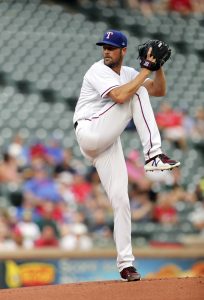12:03pm: Ken Rosenthal of The Athletic tweets that the Mets and Brewers have discussed a package deal that would send both players to Milwaukee, though there’s no indication that anything is close to being completed. The D-backs are indeed in the mix for Cabrera, he adds.
9:05am: Teams who’ve spoken to the Mets about the availability of Asdrubal Cabrera have gotten the impression that he’ll be traded soon, reports Andy Martino of SNY.tv. While “soon” is a relative term, especially with the non-waiver trade deadline just four days away, Martino adds that the Mets then plan to shift their “full attention” to finding a trade partner for Zack Wheeler. Presumably, they’ll want to leave themselves ample room to discuss that swap, so it stands to reason that they’d hope to wrap up a Cabrera swap in short order.
ESPN’s Buster Olney tweeted yesterday that the Diamondbacks have “checked in” on Cabrera as they seek to bolster their own infield mix. Joel Sherman of the New York Post adds the Indians and the Phillies to the fray, though he notes that Philadelphia’s interest would be stronger were Cabrera still viewed as a capable shortstop. Fancred’s Jon Heyman tweets that the Braves and Brewers, too, may be in the market. While a number of teams have inquired to some extent, the Post’s Mike Puma surmised yesterday that there are three or four teams with legitimate interest in Cabrera (Twitter link). As for Wheeler, he’s generating interest from the Brewers and Reds, per Martino. The Cubs had shown interest, though yesterday’s agreement to acquire Cole Hamels would quite likely put an end to that pursuit.
While the Mets have had just about everything possible go wrong for them over the past couple of seasons, their signing of Cabrera in the 2015-16 offseason has proven to be an excellent one. He’s earning $8.5MM in the third year of what proved to be a $25MM contract (after his 2018 option was exercised) and is hitting .277/.329/.488 with 18 homers, 23 doubles and a triple. Cabrera, though, has received dreadful defensive ratings for his work at second base (-18 Defensive Runs Saved, -6 Ultimate Zone Rating), which won’t do his trade value any favors.
As for Wheeler, he’ll obviously have the greater value of the pair, given his affordable salary, the fact that he’s controlled through 2019, his recent success and the plethora of teams seeking to bolster their rotation in the coming days. Over his past 10 starts, Wheeler has worked to a 3.50 ERA (3.40 FIP, 4.17 xFIP) with 7.8 K/9, 3.1 BB/9 and 0.56 HR/9 with a 40.2 percent ground-ball rate. His fastball has averaged 96.4 mph in that span, and he’s posted a strong 11.3 percent swinging-strike rate. Puma noted yesterday that as many as 10 teams have displayed some level of interest.

